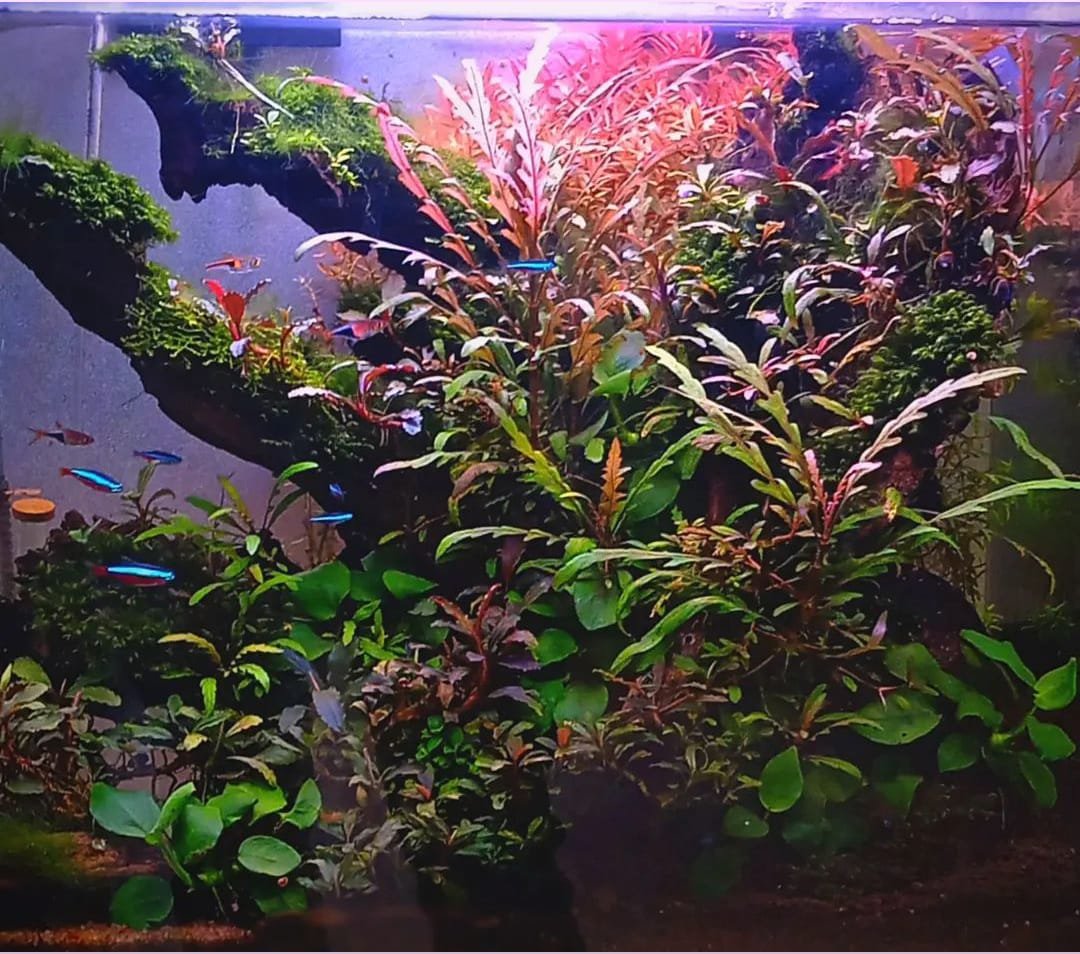All you need to know about Bucephalandra
What is Bucephalandra? Our dear Buce is a plant that you find in abundance growing along streams, attached to rocks. They are the amphibians among aquatic plants meaning, you can grow them emersed and submersed in water. A low maintenance and a friend to all aquarium lovers, beginners or expert.
Technical Aspects of Buce
Name: Bucephalandra
Origin: Island of Borneo
Varieties: over 200, classified into 10 names
Growth: 2-4 inches in height and 4inch long leaves
Appearance: oval leaves with white dots & iridescent colours. Produces white or pink flowers
Care Guide
Level: Easy to care, similar to anubias
Growth Rate: Slow
Temperature: 71oF-82oF
PH: 6 to 8
Light: low light for a slow growth, medium to high for a faster growth (no more than 100 PAR)
Co2: not necessary but a co2 set up aquarium will not affect the growth
Side notes: a good flow of water will assist since they are found in fast streams. A tad bit of water fertiliser would support growth.
Steps to propagate: Over a period of time, buce will produce pink/white flowers. You can separate the buce by using UNS scissor for a neat trim. Make sure you don’t cut them too short, use super glue to attach on hard rocks/ drift woods (make sure you water level is low when you plant them on rocks). You can even plant them directly into the substrate (just the roots, not the rhizomes)
Ever heard of Bucephulandra Melt? Here’s what you need to know.
Plants are like infants; they need the right care and attention. Our dear Buce is no less when it comes to caring. Although low maintenance, it is very crucial that you check them from time to time. A sudden change in water, light, nutrients could tamper their growth.
What is Bucephulandra Melting? This is a process when either of the following occurs- the leaves shed, the roots turn black or the plant turns mushy. The 1st thing one needs to see when you identify a melt is, check the roots. As long as you have healthy rhizomes, you are good to go. Buce always tends to grow back, provided you give them the time. Patience is key.
How to check for healthy roots? If you see white or small red shoots growing, that is your sign. The unhealthy or dead roots are black, this would be the time when one can prune them (you can use a UNS scissor for a neat trim).
Now that you have identified the melt, the next thing is to check what triggered it.
1. Have you changed your light? Buce tends to thrive in medium to high light. 100 micromols of PAR can cause problems in its growth.
2. Water check? High levels of ammonia or organic waste paves way for buce melt. Easy way to check is to buy the kit and test your water. If you are a beginner, make sure you cycle your tanks before planting them.
3. Do you find algae around? It is necessary to wipe of the algae as basic tank maintenance. Make sure you have a clean tank at all times
4. Did you replant your buce? Take additional care when you want to move or replant buce. Since they are slow growers, any damage could be permanent. Handle them with utmost care.
The above are the primary factors. Once you have identified the melt, how can you be sure your buce revives? It is important to understand that unlike other plants, buce has a snail growth. They produce as few as one leaf in 2 weeks. So do not get disappointed if you don’t see immediate change.
Let’s look into the stages of revival
1. Prune and trim the affected area (roots, leaves etc)
2. New shoots look like tiny red spikes, this means the buce has started reviving.
3. These shoots grow and evolve to become leaves (red-purple colour)
4. As they grow, the leaves evolve to dark green. This is the stage they thrive
Buce melt is not a serious issue, so don’t be discouraged when you see one. Although they take their time, with the right care and patience, they thrive to be at their best.
BWA Verdict:
| PROS | CONS |
| Low maintenance | Expensive |
| Iridescent | Could melt |
| Ideal for low tech and nano tanks | Snail Growth |
Remya Jkumar is a blogger by Interest, Chef by choice, Trained Dancer by Art.

